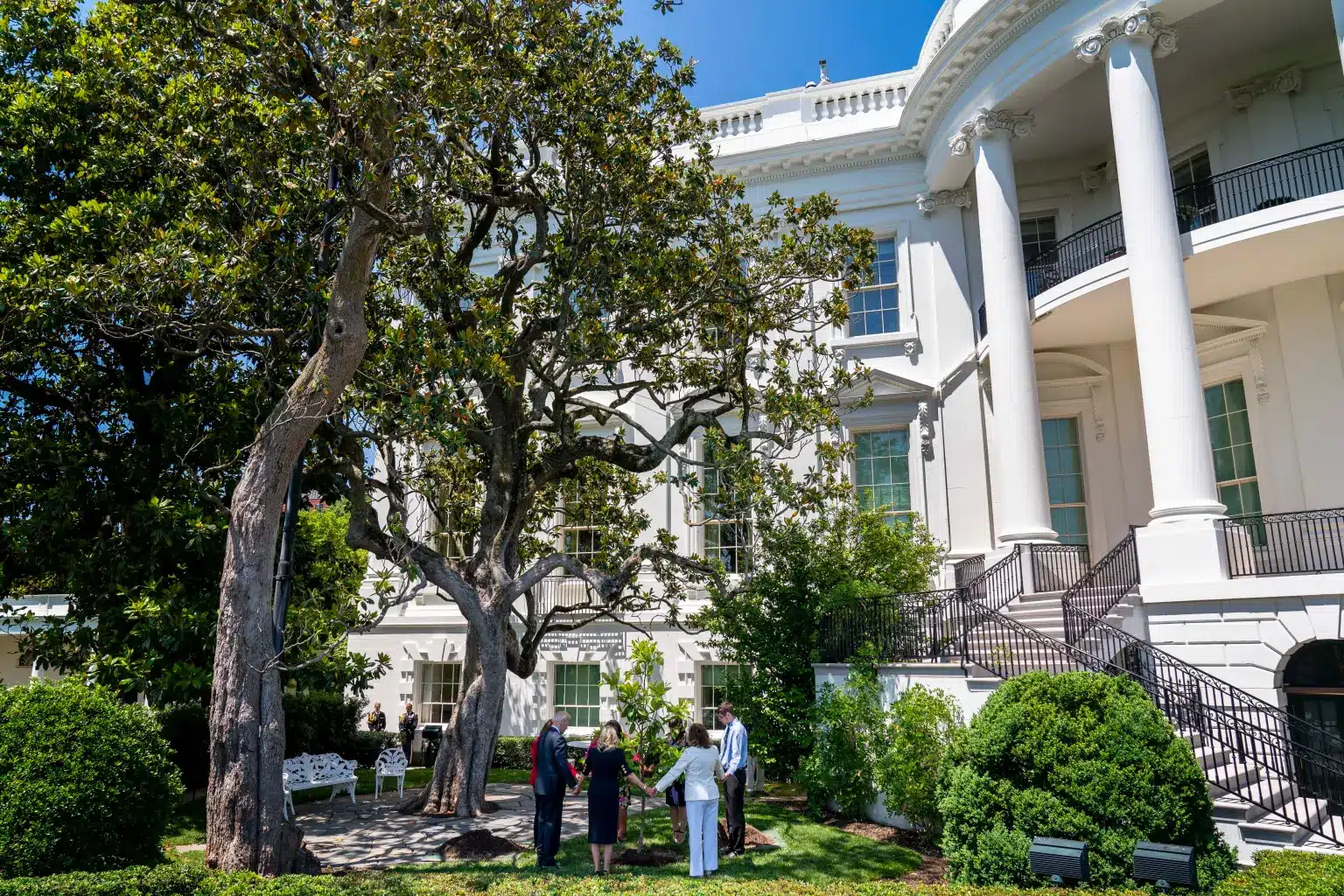The White House grounds are set for a significant change as President Donald Trump has announced plans to remove a nearly 200-year-old Southern magnolia tree, originally planted by President Andrew Jackson. Citing safety concerns due to the tree’s deteriorating condition, this decision marks the end of an era for a living piece of American history.

The Southern magnolia tree, standing near the South Portico of the White House, has been a silent witness to countless historical events. According to the National Park Service, folklore suggests that President Andrew Jackson brought seeds from his Tennessee home, the Hermitage, and planted the tree in honor of his late wife, Rachel, who passed away shortly before he assumed office in 1829. Over the years, this majestic tree has served as a backdrop for welcoming foreign dignitaries and presidential departures on Marine One.
In a statement on his social media platform, Truth Social, President Trump addressed the tree’s removal: “Everything must come to an end, and this tree is in terrible condition, a very dangerous safety hazard, at the White House Entrance, no less, and must now be removed.”
The decision follows assessments of the tree’s declining health and structural integrity. Despite significant pruning in 2017 and damage sustained from a 1994 plane crash on the South Lawn, the tree’s condition has continued to worsen, posing potential risks to visitors and staff.
President Trump emphasized that the removal process will include measures to honor the tree’s historical significance. The wood from the magnolia will be preserved for “high and noble purposes,” ensuring that its legacy endures within the White House. Additionally, plans are underway to replace the aging magnolia with a new, “very beautiful tree,” maintaining the aesthetic and historical continuity of the White House grounds.
The removal of the historic magnolia tree underscores the delicate balance between preserving history and addressing safety concerns. As the White House evolves, efforts to maintain its rich heritage while ensuring the well-being of its occupants and visitors remain paramount. This event serves as a poignant reminder of the ongoing stewardship required to safeguard America’s historical landmarks for future generations.
